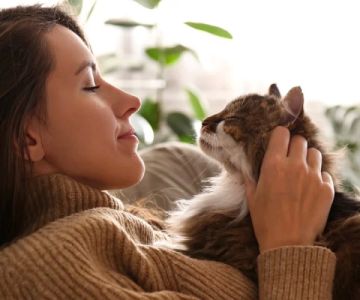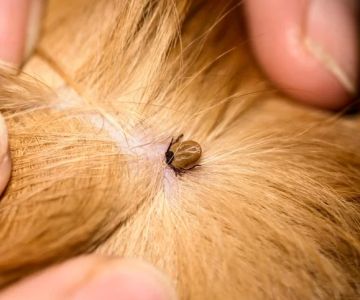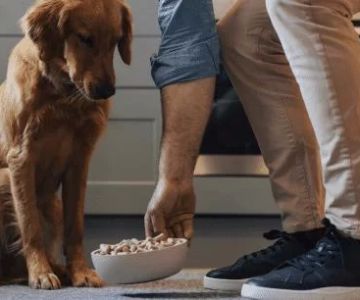1. Introduction: Understanding Your Picky Eater Cat
As a cat owner, one of the most frustrating experiences can be dealing with a picky eater cat. You put down a delicious meal, only for your cat to turn up their nose and walk away. It can be perplexing, especially when you know your cat needs to eat to stay healthy. However, picky eating is a common behavior among cats, and understanding why your cat is being selective about their food is the first step in resolving the issue.
In this article, we’ll explore the reasons behind picky eating in cats, what you can do to encourage better eating habits, and how to address the underlying causes of their behavior. Whether your cat is simply fussy or has a more serious eating problem, we’ve got you covered with helpful tips and practical advice.

16101 W Dixie Hwy, North Miami Beach, FL 33160, USA
See Details2. Common Reasons Why Cats Are Picky Eaters
Before you can tackle the issue of picky eating in cats, it's important to understand why your cat might be refusing food. There are several factors that could contribute to your cat’s selective eating habits. Let’s dive into some of the most common reasons behind this behavior:

286 Wilmington West Chester Pike, Chadds Ford, PA 19317, USA
See Details2.1 Health Issues
One of the first things to consider when your cat stops eating or becomes picky is their health. Cats can be sensitive to changes in their diet or environment, and certain medical conditions can cause a lack of appetite. Conditions like dental disease, gastrointestinal issues, or kidney disease can lead to discomfort, making your cat less likely to eat. If your cat’s picky eating habits persist, it’s important to consult your veterinarian to rule out any underlying health issues.
For instance, a cat suffering from a toothache might find it painful to chew dry food, leading to them refusing meals. A visit to the vet can help determine if there’s a medical reason for your cat's lack of appetite, and your vet can recommend appropriate treatments or dietary adjustments.
2.2 Stress and Anxiety
Cats are creatures of habit, and changes in their environment can cause stress and anxiety, which may affect their eating habits. New people, pets, or even moving to a new home can trigger feelings of insecurity in your cat, leading them to lose interest in food. Additionally, changes in the routine, such as feeding times or the type of food offered, can make your cat feel uneasy and cause them to become more selective with their meals.
If your cat is stressed or anxious, it’s important to create a calm and comfortable environment for them. Try to keep their feeding area quiet and free from distractions, and provide them with a predictable routine. Some cats also benefit from pheromone diffusers, which help to reduce anxiety and promote a sense of calm.
2.3 Food Preferences and Sensory Sensitivity
Just like people, cats have food preferences, and they can be very particular about what they like to eat. Cats have sensitive taste buds and may refuse food that doesn’t meet their sensory preferences. This could mean your cat prefers wet food over dry food, or they might have a specific flavor or texture they enjoy more than others. Cats also have a strong sense of smell, and if their food smells off or isn’t fresh, they may refuse to eat it.
If you find that your cat is particularly selective, it’s worth experimenting with different types of food to see what they prefer. Offer a variety of flavors, textures, and temperatures (some cats prefer food that is slightly warmed), and observe what your cat enjoys most. Be patient, as finding the right food can sometimes take time.
2.4 Spoiled or Stale Food
Sometimes, a cat’s picky eating habits may simply be the result of spoiled or stale food. Cats are more sensitive to the freshness of their food than we might think, and they may refuse to eat if the food has been sitting out too long or is past its expiration date. Always ensure that your cat’s food is stored properly and offered fresh. For wet food, make sure it is refrigerated and served within a reasonable time after opening. For dry food, keep it in an airtight container to preserve its flavor and nutritional value.
3. How to Deal with a Picky Eater Cat
Now that we’ve covered the common reasons why cats can be picky eaters, let’s discuss some practical solutions to help encourage your cat to eat more consistently. While some of these strategies may take time and patience, they can go a long way in helping your cat develop better eating habits:
3.1 Try Different Food Options
If your cat is turning up their nose at their usual food, try offering different options. Start with a variety of high-quality wet and dry food, and observe which ones your cat prefers. You might also consider switching to a different protein source, such as chicken, turkey, or fish, as some cats are more inclined to eat certain types of meat. Additionally, rotating between different brands and flavors can keep your cat engaged and excited about mealtime.
If your cat is particularly picky, consider offering food in a different form—some cats enjoy freeze-dried treats or raw food options. While these might be more expensive, they can be a good way to entice a finicky eater.
3.2 Make Mealtime a Calm and Positive Experience
Creating a calm and quiet environment during mealtime is essential for helping your cat feel more comfortable. If there are too many distractions or stressors around them, your cat might refuse to eat. Try feeding your cat in a quiet room or away from other pets and people to minimize distractions.
Some cats benefit from positive reinforcement during mealtime. Offering praise or small treats when they eat can create a positive association with food. Gradually, your cat will learn to associate mealtime with enjoyment and comfort.
3.3 Provide a Consistent Routine
Cats thrive on routine, and this extends to their feeding schedule. Try to feed your cat at the same times each day and avoid offering food outside of these scheduled times. This can help your cat develop a sense of predictability and security around mealtime, making them more likely to eat.
Consistency is key, especially if you have multiple cats. Ensure that each cat has their own space and bowl during mealtime, as some cats may become stressed or anxious if they feel competition for food. Keeping their feeding area calm and predictable will encourage better eating habits.
3.4 Consult Your Veterinarian
If your cat’s picky eating habits persist despite trying different foods and routines, it’s important to consult your veterinarian. A vet can perform a thorough examination to rule out any medical conditions that could be causing your cat’s loss of appetite or food refusal. If necessary, your vet may recommend specialized diets, medications, or further testing to address any underlying health issues.
At Hidden Brook Veterinary, we specialize in offering personalized care for your pet’s dietary needs and health. Our team is here to help guide you through any challenges your cat may face, ensuring they remain happy and healthy.
4. Conclusion: Helping Your Picky Eater Cat
Dealing with a picky eater cat can be challenging, but with patience and the right approach, most cats can develop healthier eating habits. By understanding the potential causes of your cat’s picky eating, offering a variety of food options, and creating a calm mealtime environment, you can encourage your cat to eat more consistently.
If you’re struggling with your cat’s eating habits, don’t hesitate to consult your veterinarian for professional guidance. At Hidden Brook Veterinary, we offer expert advice and solutions tailored to your cat’s individual needs. Together, we can help your cat enjoy mealtime and stay healthy for years to come!









